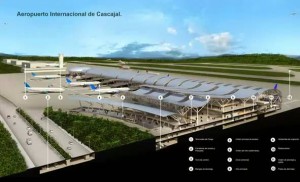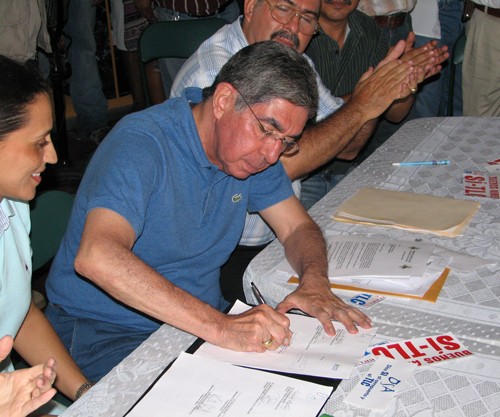Thoughts on New International Airport in Costa Rica
Written by Nick Halverson / February 2017
My first trip to Costa Rica was in March 2005. During that initial trip, the local real estate agent told me about the “New international airport that will be built soon.” Here we are twelve years later and still not another international airport.
In my agent’s defense, there had been government publicity, an article in The Tico Times, with a map, about the airport and he was simply repeating what he had read. Again, in 2007, then-Costa Rica President Oscar Arias held a public relations event whereby he signed a decree to move forward with an international airport in Osa.
In the past 18 months there has been a lot of talk about a new international airport to be built in Orotina. From contacts I have, as

recently as six months, after the formal announcement had been made, no wind studies or environmental studies had been conducted. I find it hard to believe that the Orotina airport is as much of a ‘slam-dunk’ as is being reported. The latest news is that we will all know more by the end of 2017.
Is the airport going to be built in Osa? I would guess no.
As much as I would love to have an international airport 30 minutes away from our development (believe me, prices would go up quickly!), based on what happened the past 10 years from Oscar Arias announcing it, to now = very little of anything has happened. Osa currently doesn’t have the infrastructure in place to handle a project that large. I could argue it is a bit of a chicken-and-egg problem. The large hotel chains haven’t built here yet because there isn’t a reason to without an international airport. The feasibility studies would show that the region isn’t equipped to handle an international airport since there aren’t any large hotels in the area. It’s a circular argument.
In addition, after the signing of the document by Arias, the people of Costa Rica voted on Costa Rica’s participation in CAFTA

(Central America Free Trade Agreement) or TLC as it was known in Costa Rica. The Osa region voted against the measure, and it has been speculated that in retaliation for not supporting him, President Arias pulled the project out of Osa. By contrast, Limon on the Caribbean side, voted “Si” (yes) for the TLC, and soon after the vote, the Limon Port expansion was announced (Limon Moin Container project).
Regardless of the real reason why the airport was never started in Osa is still up for debate today. I have spoken with Osa Mayor several times, and he is continuing to try and push the project forward. However, he understands the difficulty of getting the politicians in San Jose, four hours away, to listen.
Another option that has quickly, and quietly, been worked on is to build a new airport in the San Isidro de el General, Perez Zeledon. Although not technically in Osa, it would be a great advantage for owners in Las Villas de San Buenas. The reason why this would be great for Las Villas de San Buenas is that currently San Isidro is only 75 minutes away. I have it confirmed by several sources, that the Osa municipality and the municipality of San Isidro are in late planning stages for improving and paving the road from the southern area of San Isidro that leads into Uvita. When this road project is completed, the trip to San Isidro will be cut down to approximately 45 minutes.
 San Isidro (Aeropuerto PZ) has numerous advantages over Osa for the airport. Several include:
San Isidro (Aeropuerto PZ) has numerous advantages over Osa for the airport. Several include:
- Large population base (~150,000 people) that may use the airport for outbound flights.
- With the large population base, there are dozens of hotels already available.
- A very entrepreneurial region of Costa Rica. There are 1,000s of business owners in the region who support commerce and trade.
- By building the airport in San Isidro, the Osa region would still benefit due to the Pan American Highway that is already in place connected Palmar Norte to San Isidro (by way of Buenos Aires).
- Plenty of flat land is available.
- The project is not just an airport. The local government is planning on a multi-faceted development plan, including tax incentives for business to move there and other project tied to the airport.
Here’s a video that shows the concepts:
Regardless of which location is chosen, it will be a benefit to us here in the Osa region. I can’t guarantee when or where exactly, although I would estimate that the timelines are at least five years away. The one thing I can guarantee, is depending on where the location is chosen, land prices will go up quickly or VERY quickly.
